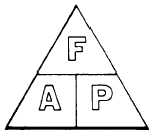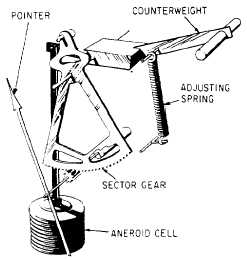Figure 2-1.—Device for determining the arrangement of the
force, pressure, and area formula.
Figure 2-1 illustrates a memory device for
recalling the different variations of this formula.
Any letter in the triangle may be expressed as the
product or quotient of the other two, depending
on its position within the triangle.
For example, to find area, consider the letter
A as being set off to itself, followed by an equal
sign. Now look at the other two letters. The letter
F is above the letter P; therefore,
NOTE: Sometimes the area may not be
expressed in square units. If the surface is
rectangular, you can determine its area by
multiplying its length (say, in inches) by its width
(also in inches). The majority of areas you will
consider in these calculations are circular in shape.
Either the radius or the diameter may be given,
but you must know the radius in inches to find
the area. The radius is one-half the diameter. To
determine the area, use the formula for finding
the area of a circle. This is written A =
where
A is the area,
is 3.1416 (3.14 or 3 1/7 for most
calculations), and r2 indicates the radius squared.
Atmospheric Pressure
The atmosphere is the entire mass of air that
surrounds the earth. While it extends upward for
about 500 miles, the section of primary interest
is the portion that rests on the earth’s surface and
extends upward for about 7 1/2 miles. This layer
is called the troposphere.
If a column of air 1-inch square extending all
the way to the “top” of the atmosphere could
be weighed, this column of air would weigh
approximately 14.7 pounds at sea level. Thus,
atmospheric pressure at sea level is approximately
14.7 psi.
As one ascends, the atmospheric pressure
decreases by approximately 1.0 psi for every 2,343
feet. However, below sea level, in excavations and
depressions,
atmospheric pressure increases.
Pressures under water differ from those under air
only because the weight of the water must be
added to the pressure of the air.
Atmospheric pressure can be measured by any
of several methods. The common laboratory
method uses the mercury column barometer. The
height of the mercury column serves as an
indicator of atmospheric pressure. At sea level and
at a temperature of 0° Celsius (C), the height of
the mercury column is approximately 30 inches,
or 76 centimeters. This represents a pressure of
approximately 14.7 psi. The 30-inch column is
used as a reference standard.
Another device used to measure atmospheric
pressure is the aneroid barometer. The aneroid
barometer uses the change in shape of an
evacuated metal cell to measure variations in
atmospheric pressure (fig. 2-2). The thin metal of
the aneroid cell moves in or out with the variation
of pressure on its external surface. This movement
is transmitted through a system of levers to a
pointer, which indicates the pressure.
The atmospheric pressure does not vary
uniformly with altitude. It changes more rapidly
at lower altitudes because of the compressibility
of the air, which causes the air layers close to the
earth’s surface to be compressed by the air masses
above them. This effect, however, is partially
counteracted by the contraction of the upper
Figure 2-2.—Simple diagram of the aneroid barometer.
2-2



